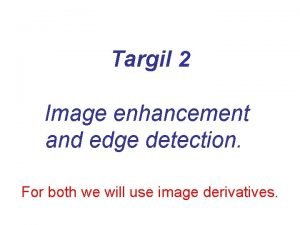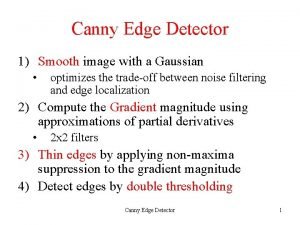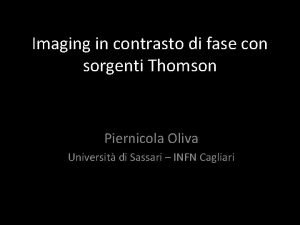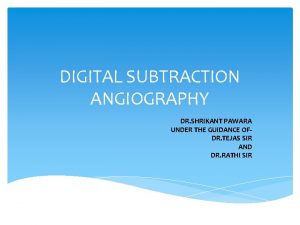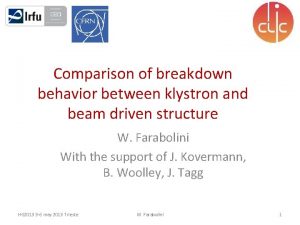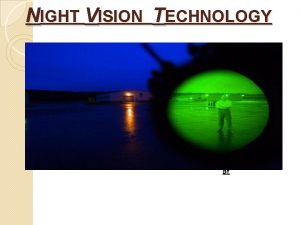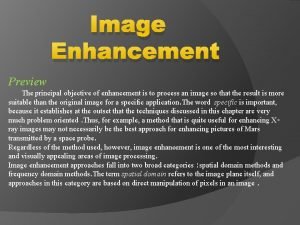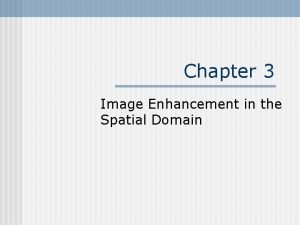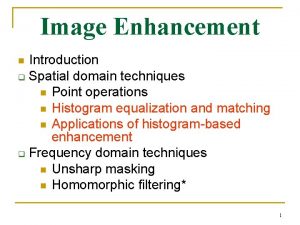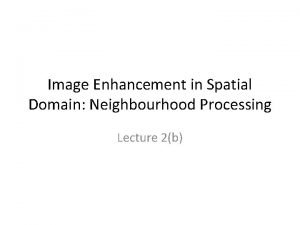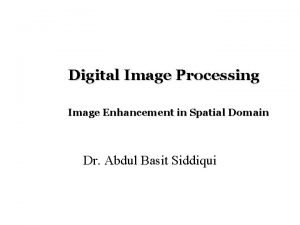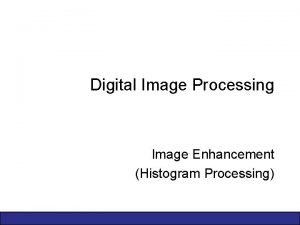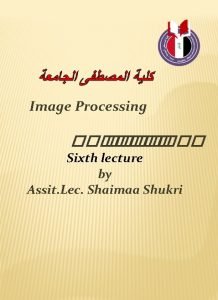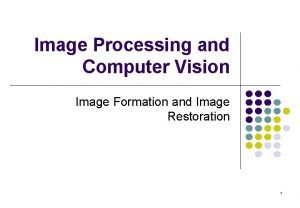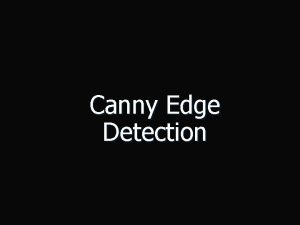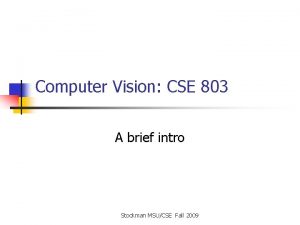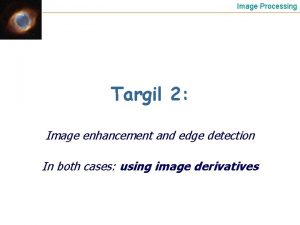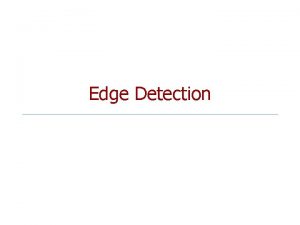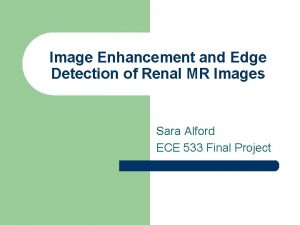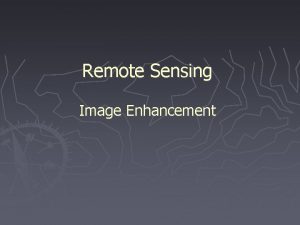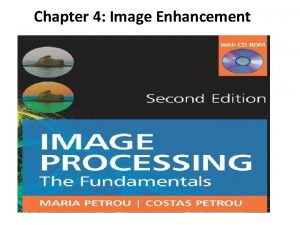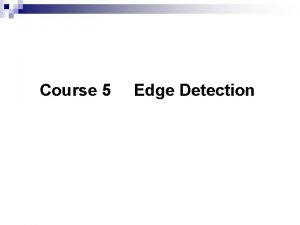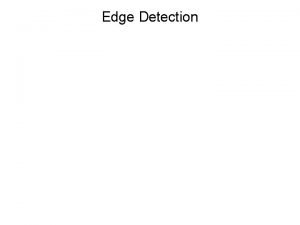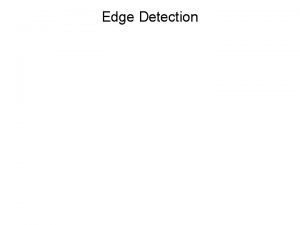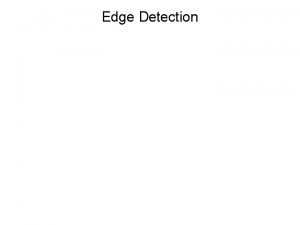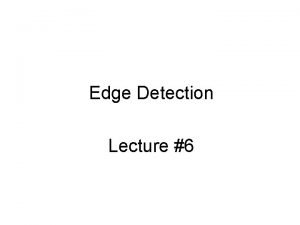Targil 2 Image enhancement and edge detection For




![Image derivatives (Convolve with [1 -1]) (Convolve with [1 -1]T) A better kernel: (Convolve Image derivatives (Convolve with [1 -1]) (Convolve with [1 -1]T) A better kernel: (Convolve](https://slidetodoc.com/presentation_image_h/8084db89882c82fb76b66f72f3e85420/image-5.jpg)














- Slides: 19

Targil 2 Image enhancement and edge detection. For both we will use image derivatives.

Image enhancement • Histogram enhancement (histogram equalization…) • Reducing noise (smoothing, median) • Sharpening • Emphasize the details • Make the edges stronger • Problem: we magnify the noise

Sharpening: Subtracting The Laplacian F(x) F’’(x) F(x)-F’’(x)

Reminder : Convolution image Kernel, Convolver For example: means that
![Image derivatives Convolve with 1 1 Convolve with 1 1T A better kernel Convolve Image derivatives (Convolve with [1 -1]) (Convolve with [1 -1]T) A better kernel: (Convolve](https://slidetodoc.com/presentation_image_h/8084db89882c82fb76b66f72f3e85420/image-5.jpg)
Image derivatives (Convolve with [1 -1]) (Convolve with [1 -1]T) A better kernel: (Convolve with ½*[1 0 -1])

Image derivatives (cont’) Problem: the image is not continuous. A better approximation: • Locally approximate the image with a smooth surface. • Compute the derivatives of this surface. Popular kernels:

The second derivative Check that:

The Laplacian Equation: The matrix: Subtracting the Laplacian:

Sharpening Example

Edge Detection Why do we need it ? • A compact representation of the image • More robust to light changes. • Easier to follow (tracking and computations of camera motion) • Segmentation: usually, edges are located at transitions between objects • Used for texture analysis

Edge Detection Wide edge Noise • What are “edges” ? Texture • How to find the edges ? T-junction Transition between objects • How to compute the exact location of an edge ?

The gradient The vector of derivatives Edge Size Edge Direction Derivative in Direction

The gradient Original Gradient

Example: Derivatives Ix = Iy = * -1 0 1 =

Gradient Ix 2 + Iy 2 =

Edge Localization-Zero Crossing Where exactly is the edge ? f Zero crossing of f’’ ’’f Problem: f’’ is very noisy Smooth first !

A smoothing with a 2 D Gaussian (We usually use the binomial coefficients instead. ) 11 12 1 1 3 3 1 1 4 6 4 1

Canny Edge Detection • Computing the image derivatives Gx, Gy – Smoothing with a Gaussian. – Using simple derivative kernels. • Compute the edge direction: • Take only the local maxima in that direction (to get an edge with width 1) • Hysteresis: Edge linking with two thresholds • Q. : What will be the width of the Gaussian?

Original Example Canny
 Canny
Canny What is canny edge detection in image processing
What is canny edge detection in image processing Edge enhancement
Edge enhancement Edge enhancement
Edge enhancement Rising edge and falling edge
Rising edge and falling edge Image enhancement in night vision technology
Image enhancement in night vision technology Objective of image enhancement
Objective of image enhancement Gamma correction image processing
Gamma correction image processing Image enhancement by point processing
Image enhancement by point processing Spatial filtering
Spatial filtering Image negatives a gray level transformation is defined as
Image negatives a gray level transformation is defined as Image enhancement in spatial domain
Image enhancement in spatial domain Image enhancement in spatial domain
Image enhancement in spatial domain Image enhancement in spatial domain
Image enhancement in spatial domain Image enhancement
Image enhancement Edge detection sobel
Edge detection sobel Edge detection
Edge detection Ocr thai
Ocr thai Edging nnn
Edging nnn Edge detection
Edge detection
